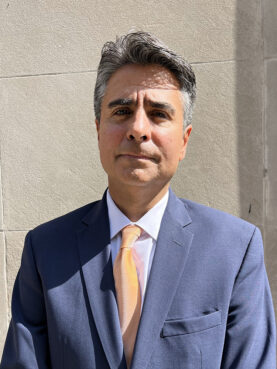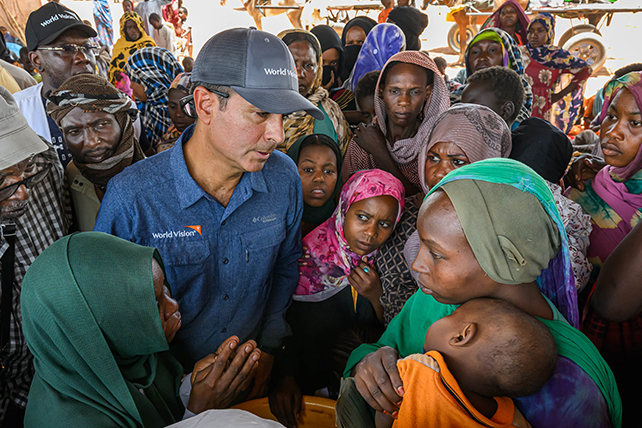“Whatever the issue is, when people of goodwill and people of faith understand the needs around the world, they have always stepped up,” Sandoval said in a recent interview with Religion News Service, in which he discussed the consequences of USAID cuts and how World Vision navigates the resulting financial uncertainty.
The interview has been edited for brevity and clarity.
It has been two months since USAID officially ceased to exist. What were some of the immediate consequences on your operations?

Edgar Sandoval Sr. (RNS photo/Fiona André)
I think today, we are hopeful about the future. When the cuts were announced back in January, we were concerned. Considering the fluid and changing nature of information that was flowing, we were not really sure where things were going to land, so we immediately got to work. There was a call to apply for waivers if an organization thought the work was life-saving. A lot of the work we do is life-saving emergency assistance. We were able to get quite a bit of waivers and extensions through our program.
We’re going to be seeing a 10% to 11% reduction in revenue this year. That’s a meaningful reduction, and it impacts a lot of kids, vulnerable children. But it’s also limited because we have a portfolio of funding resources where the U.S. government is not the majority. We have private donors, corporations, foundations, churches and sponsors.
We are continuing to look at the future, and we stand on 75 years of weathering … all kinds of storms. We worked with 15 different administrations over those 75 years. We remain very confident that we’ll be able to not only continue our operation but actually do the most ambitious campaign we’ve ever had: to reach 300 million people, mostly vulnerable people, with life, hope and a future.
Were you able to maintain all operations and initiatives despite the funding cuts?
We had to cut some programs. We do two types of work: relief and development. We were able to maintain the vast majority of the relief, and we had most of the cuts on the development side.
On the relief side, we got lots of extensions. For instance, I was concerned about one of our programs in Ethiopia that was a grant-funded program. It’s a really important program because it serves as a bridge for people who are ultra poor to be able to feed themselves with emergency food and save some of the money they earn as daily laborers to build a small business and eventually leave the food distribution. Through our advocacy work, we have gotten an extension all the way through 2026.
On the development side, which is the smaller part of our U.S. grant-funding portfolio, there we had to stop. We had to stop one program in Rwanda that was geared towards children with disabilities. I visited Rwanda two years or so ago to see that program. I met Abraham, a young boy who has cerebral palsy and spent the vast majority of his life at home with his mom. Through this program, Abraham has a wheelchair now, he goes to school every day and has community. It warms my heart to see the tremendous impact that we were having, not only in Abraham’s life, but also in the life of Abraham’s mom as his primary caretaker. I have some experience with children with disabilities. One of our daughters has cerebral palsy as well, so I know how hard it is to take care of the most vulnerable. It broke my heart to think that program could come to an end. It did get stopped from a U.S. government standpoint. The good news is some of our primary donors stepped in to fund the program, and right now, it continues to be funded.

World Vision US President and CEO Edgar Sandoval Sr., center left, visits a school feeding program for Sudanese refugee school children in Farchana Refugee Camp, Chad, in May 2024. (Photo © Wold Vision/Jon Warren)
As you’re looking for new donors, what have you found to be most important in conveying the mission and values of World Vision?
There’s two big issues right now in the humanitarian sector, one is funding. Even before the U.S. government decisions, the humanitarian sector already had a huge gap in terms of funding versus needs. The other issue, that since the beginning of 2025 has maybe become more poignant, is the misconceptions about whether humanitarian assistance works or doesn’t work. Right now, at World Vision, we are reframing, reclaiming the narrative with the fact that we have seen over 75 years on the ground.



